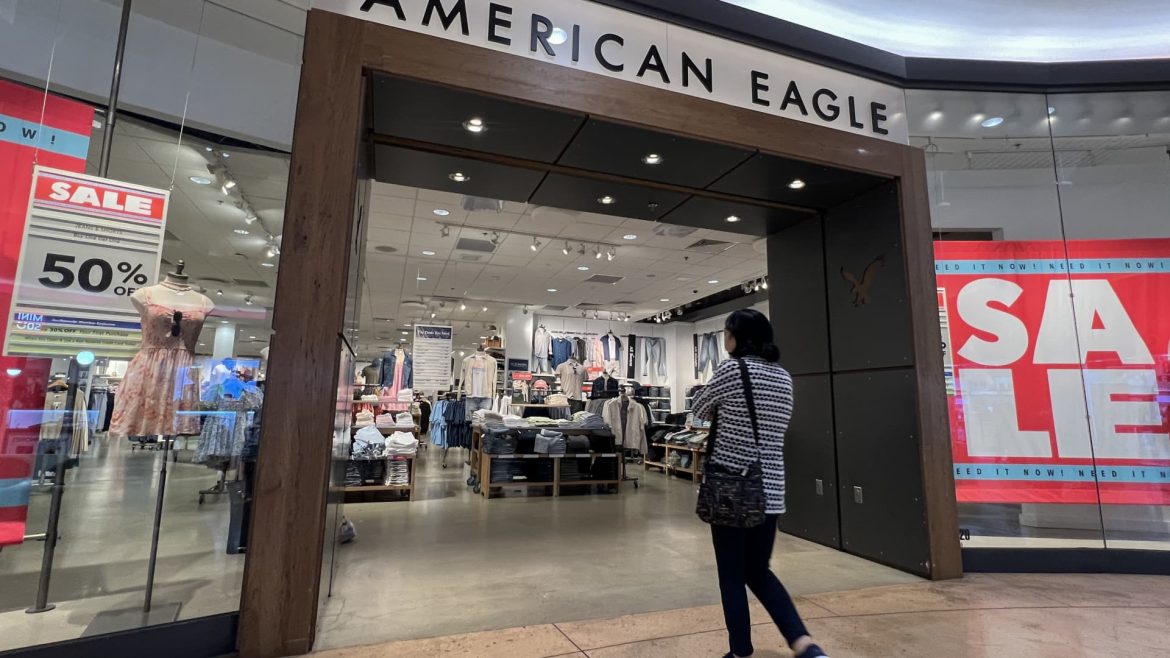American Eagle’s Stock Plunge: A Comprehensive Analysis
Introduction
American Eagle Outfitters, a prominent player in the retail apparel industry, recently experienced a significant stock plunge of 17% following the withdrawal of its 2025 guidance and a substantial inventory write-off. This move has sent shockwaves through the market, raising questions about the company’s financial health and strategic direction. This analysis delves into the underlying factors contributing to this dramatic shift and explores the broader implications for American Eagle and the retail sector.
Withdrawal of 2025 Guidance
The decision to withdraw the 2025 guidance was driven by macroeconomic uncertainty and the need for management to reassess forward plans in light of first-quarter results. This move underscores the volatile and unpredictable nature of the current economic landscape, which has forced many companies to adopt a more cautious approach. The withdrawal of guidance is a clear indication that American Eagle is grappling with significant challenges that were not fully anticipated when the original projections were made.
Inventory Write-Offs
The $75 million inventory write-off related to spring and summer merchandise is a significant blow to American Eagle’s financials. This write-off reflects higher-than-planned discounting and a misalignment between inventory levels and consumer demand. The write-off is a stark reminder of the challenges retailers face in managing inventory in a rapidly changing market. The company’s decision to write off inventory suggests that it is taking proactive steps to address these issues, but the financial impact is substantial.
Financial Performance
American Eagle’s first-quarter results were disappointing, with a 5% decline in revenue to $1.1 billion and a 3% decrease in comparable sales. The company also recorded a GAAP operating loss of $85 million, highlighting the financial strain it is currently under. The net income for the period fell about 42% to $18.45 million, or 9 cents per share, compared to $31.74 million, or 16 cents a share, in the year-ago period. This decline in financial performance is a clear indicator of the challenges American Eagle is facing.
Market Reaction
The market reaction to American Eagle’s announcement was swift and severe. Shares plummeted 17%, reflecting investor concerns about the company’s financial health and future prospects. The significant drop in share price is a clear indication of the market’s lack of confidence in American Eagle’s ability to navigate the current economic challenges. The plunge in share price also highlights the broader market sentiment, which is increasingly cautious and risk-averse.
Strategic Implications
The withdrawal of guidance and inventory write-offs have significant strategic implications for American Eagle. The company is likely to focus on cost-cutting measures and inventory management to mitigate the financial impact of these challenges. Additionally, American Eagle may need to reassess its marketing and sales strategies to better align with consumer demand and market trends. The company’s long-term success will depend on its ability to adapt to the changing market landscape and implement effective strategies to address these challenges.
Broader Industry Impact
The challenges faced by American Eagle are not unique to the company but reflect broader trends in the retail sector. Many retailers are grappling with similar issues, including inventory management, discounting, and macroeconomic uncertainty. The withdrawal of guidance and inventory write-offs by American Eagle serve as a cautionary tale for other retailers, highlighting the importance of agility and adaptability in the face of market volatility.
Conclusion
American Eagle’s stock plunge is a stark reminder of the challenges facing the retail sector. The withdrawal of 2025 guidance and substantial inventory write-offs underscore the company’s struggle to navigate a volatile economic landscape. While the immediate impact on American Eagle’s financials and share price is significant, the company’s long-term success will depend on its ability to adapt and implement effective strategies to address these challenges. The broader industry impact highlights the need for retailers to remain agile and responsive to market trends and consumer demand.


